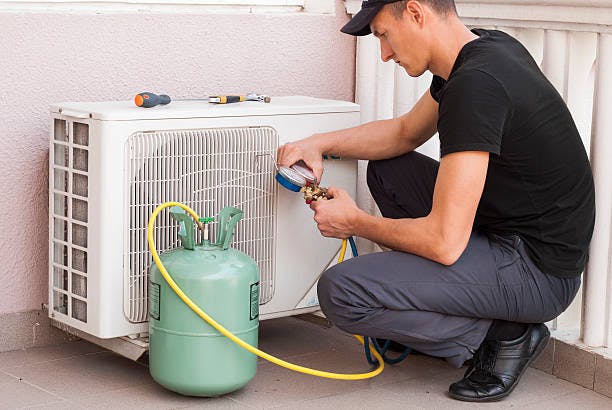In Singapore’s hot and humid climate, running an aircon is essential. However, it can also lead to high electricity bills. Hence, by making a few simple changes and avoiding common mistakes, you can significantly reduce your aircon electricity costs. Read on to find out more!
1. Setting the Temperature Too Low
One common mistake is setting the aircon temperature excessively low, as it forces the unit to work harder and use more electricity. Setting the temperature to a moderate 24–26 degrees celsius is ideal for comfort and energy savings. Each degree lower can increase energy consumption by about 6-8%, so maintaining a slightly higher but comfortable temperature can make a notable difference. For additional cooling, try running a fan in the room, which can help distribute cool air and make you feel more comfortable without lowering the aircon temperature.
2. Not Using a Programmable Thermostat
A programmable thermostat can be a game-changer for energy savings. By programming different temperatures for different times of the day, you can reduce aircon usage when you’re not home. For instance, you can set the temperature higher during work hours or when you’re asleep and adjust it to cool down just before you arrive home or wake up. Many newer thermostats come with smart features and remote control options via smartphone apps, enabling easy adjustments even when you’re not home. This allows you to optimize aircon usage and save significantly on energy costs.
3. Ignoring Regular Maintenance
Regular maintenance is crucial for efficient aircon operation. Dust and debris accumulate in filters, coils, and vents over time, restricting airflow and forcing the aircon to consume more power to achieve the desired temperature. Routine maintenance, such as cleaning or replacing filters every one to three months, checking for refrigerant leaks, and cleaning the condenser coils, ensures your aircon runs smoothly and at peak efficiency. Additionally, a well-maintained aircon has a longer lifespan, reducing the likelihood of costly repairs or premature replacement.
4. Keeping Doors and Windows Open
When doors or windows are left open while the aircon is running, cool air escapes, and warm air enters, causing the aircon to work harder to maintain the set temperature. To maximize energy efficiency, make sure all doors and windows are closed tightly. For further insulation, consider using draft stoppers under doors and sealing any gaps in windows or doors to prevent air leakage. Small habits like keeping the doors shut can make a considerable impact on your energy bill.

5. Blocking Airflow
Obstructed vents or blocked aircon units reduce cooling efficiency and make the system work harder. Avoid placing large furniture, curtains, or other objects in front of air vents, as this blocks airflow and hinders the aircon’s ability to cool the room efficiently. For wall-mounted units, make sure there’s enough space around the unit to allow optimal airflow. Keeping vents and ducts clean also prevents blockages and improves circulation. Enhanced airflow helps the aircon cool more effectively and reduces the amount of time it needs to run, saving energy.
6. Using the Wrong Size Aircon
Aircons that are too large or too small for a room lead to inefficiency and higher energy usage. An oversized aircon will cool the room quickly but cycle on and off frequently, wasting energy. Conversely, an undersized unit will run continuously to cool the space, which also increases electricity consumption. It’s important to choose an aircon that’s appropriately sized for the room. For example, a 9,000 BTU unit is suitable for a small bedroom, whereas a larger living room may require a 12,000 BTU unit. Choosing the right size aircon for your space ensures balanced cooling and energy efficiency.
7. Not Using Ceiling Fans
Ceiling fans help circulate cool air more evenly in the room, allowing you to set the aircon to a higher temperature without sacrificing comfort. By running both the fan and aircon together, you can lower the cooling load on the aircon, reducing its energy usage. This combination is especially helpful for larger rooms, where air distribution can otherwise be uneven. Additionally, ceiling fans consume less energy than aircons, and using them in tandem can lower the need for the aircon to work continuously, which saves on electricity costs.
Final Thoughts
By avoiding these common mistakes, you can significantly reduce your aircon electricity costs while maintaining a comfortable indoor environment. Regular maintenance, proper usage, and optimizing your aircon settings are key to achieving energy efficiency. For professional help, consider scheduling regular aircon service with a reliable provider in Singapore to ensure your unit operates at its best.
















